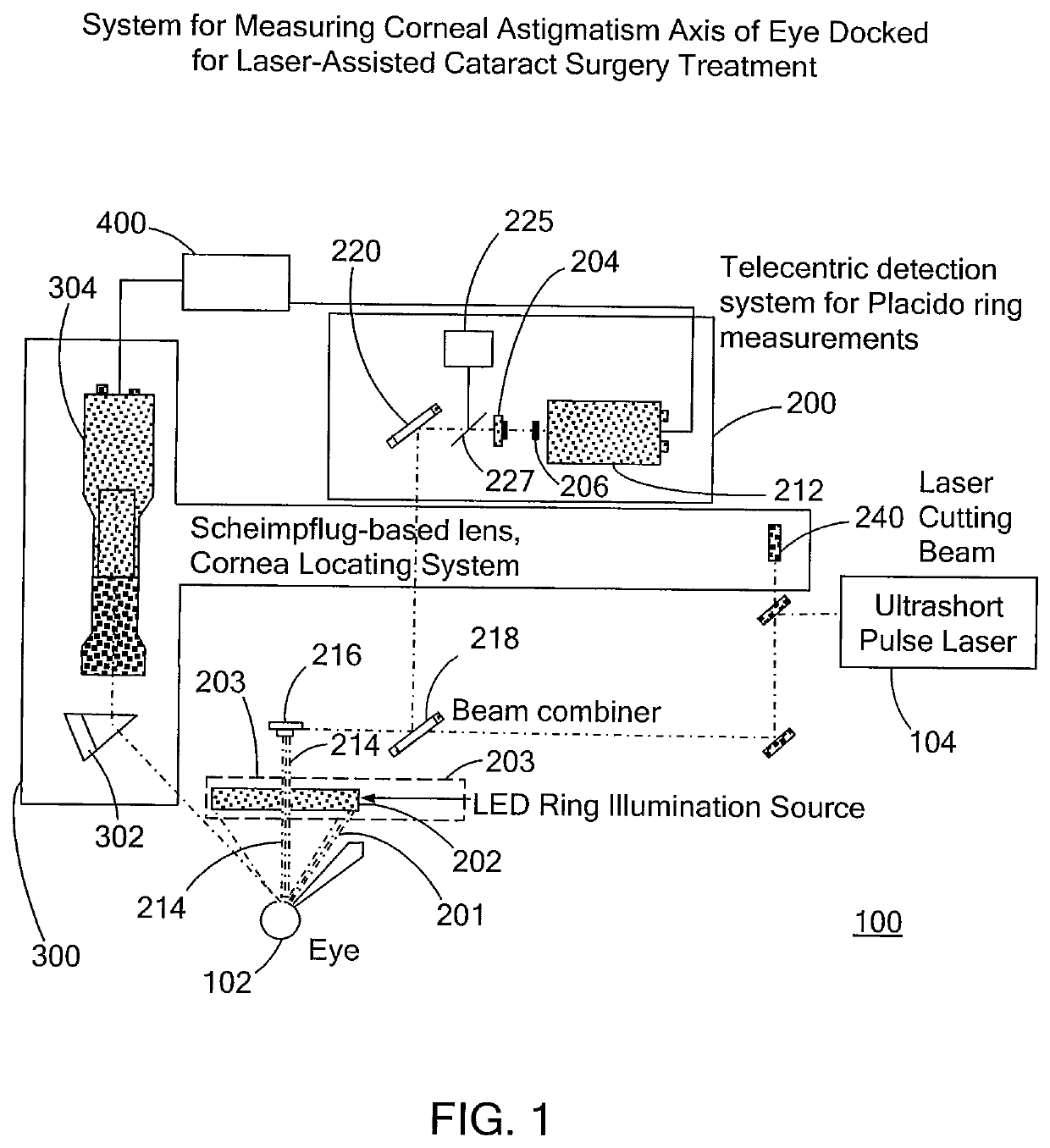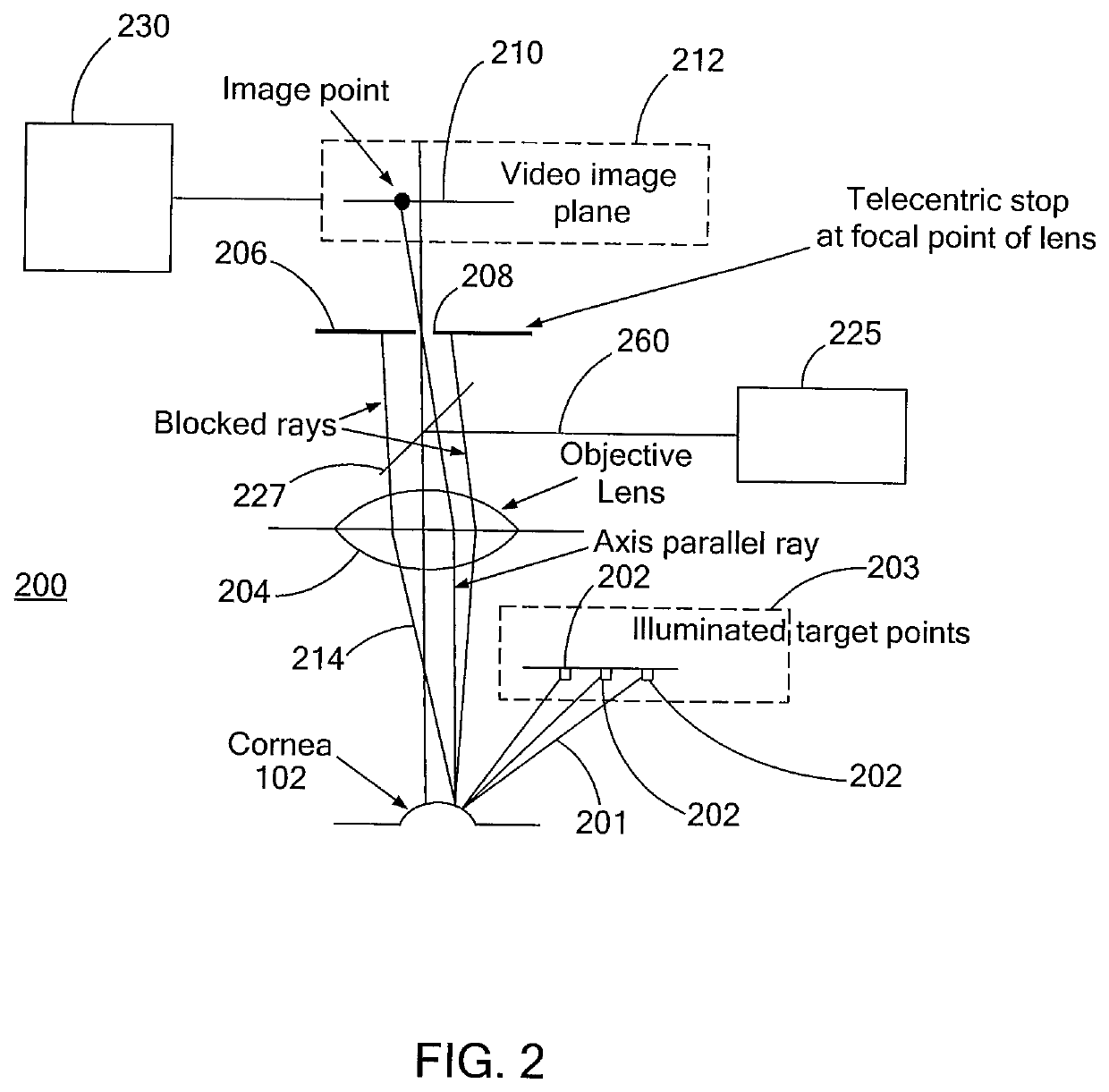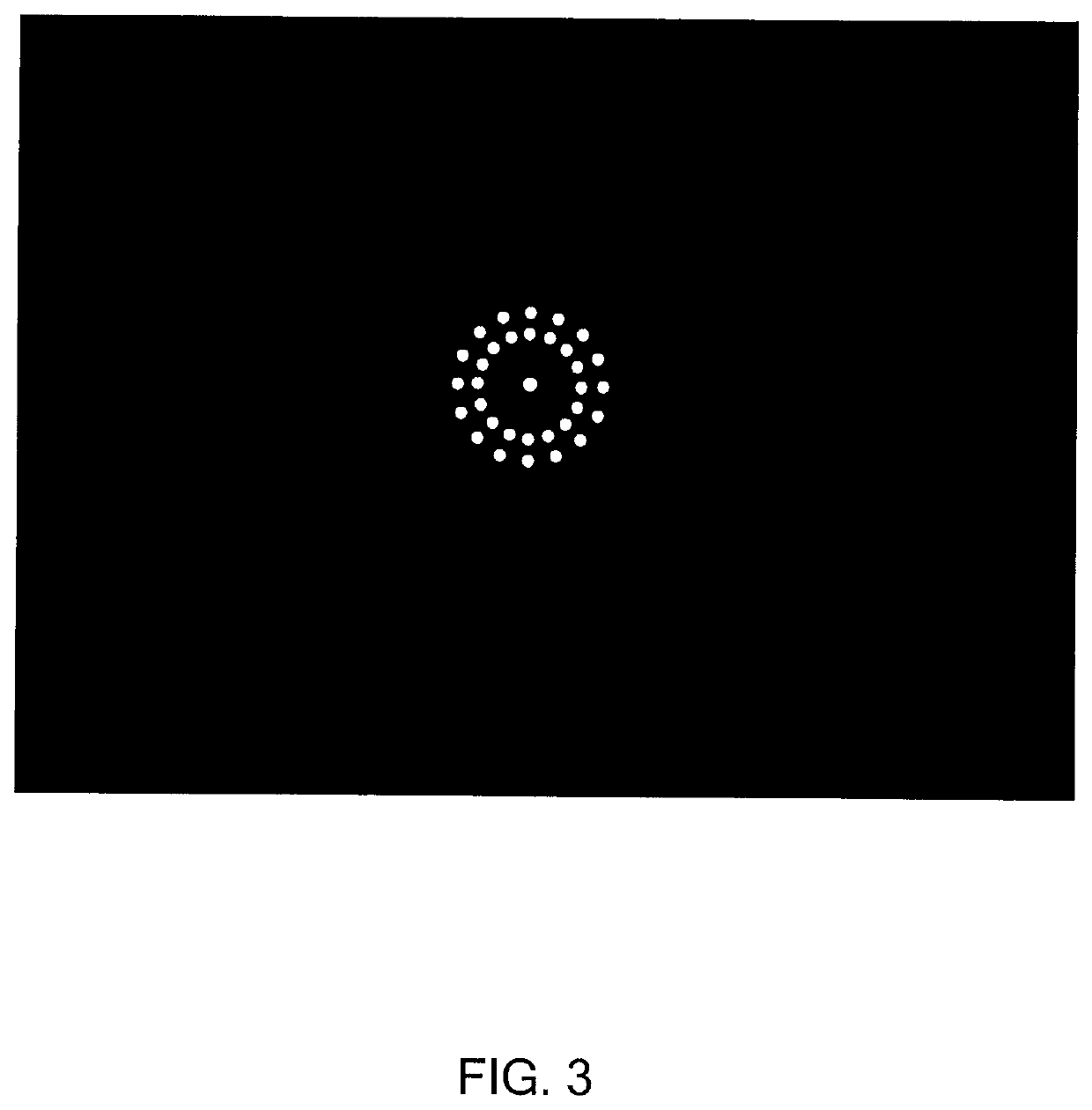System and method for measuring and correcting astigmatism using laser generated corneal incisions
a laser generated cornea and astigmatism technology, applied in laser surgery, medical science, diagnostics, etc., can solve the problems of limited accuracy, inability to eliminate bias, and inability to use ink marks to reduce the effect of cyclotorsion, so as to reduce or eliminate systematic errors during measurement
- Summary
- Abstract
- Description
- Claims
- Application Information
AI Technical Summary
Benefits of technology
Problems solved by technology
Method used
Image
Examples
Embodiment Construction
[0025]FIG. 1 schematically shows a measuring and treatment system 100 for measuring the corneal astigmatism axis and for performing an ophthalmological procedure on the eye 102 of a patient. The system 100 includes a keratometer 250 which includes a light generator 203 (dashed lines) and a telecentric detection system 200. The light generator 203 includes two light sources, each comprising a ring of 10-20 discrete LEDs 202. The telecentric detection system 200 is used for measuring concentric rings of the LEDs 202 and for alignment of the patient's eye with the keratometer. The system 100 also includes a Scheimpflug-based lens and cornea locating system 300, and a treatment laser system that includes a treatment laser 104.
[0026]In use, the patient typically lies on a gurney or a reclining surgical chair which is rolled into position under the optical head of the treatment laser 104. The keratometer 250 and the Scheimpflug-based lens and cornea locating system 300 may be designed to ...
PUM
 Login to View More
Login to View More Abstract
Description
Claims
Application Information
 Login to View More
Login to View More - R&D
- Intellectual Property
- Life Sciences
- Materials
- Tech Scout
- Unparalleled Data Quality
- Higher Quality Content
- 60% Fewer Hallucinations
Browse by: Latest US Patents, China's latest patents, Technical Efficacy Thesaurus, Application Domain, Technology Topic, Popular Technical Reports.
© 2025 PatSnap. All rights reserved.Legal|Privacy policy|Modern Slavery Act Transparency Statement|Sitemap|About US| Contact US: help@patsnap.com



